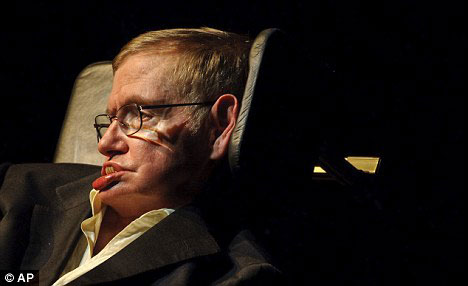People can fly to the future?
According to world-leading physicist Stephen Hawking, one day humans can build spacecraft with a speed near the speed of light (300,000 km / sec) to slow the drift rate. of time for those in the ship.
Thus, people in the ship can fly thousands of years to the future, to star systems far away from Earth.
In theory, that could help humans 'conquer the future,' even, from the universe returning to restore life on Earth if disaster destroys all life on the Green Planet. .

Professor Stephen Hawking argues that humans can build a giant spacecraft called 'Relative.' He named the ship like that because of the Time Travel on the ship that was based on the Relativity theory of the great scientist Albert Einstein.
Albert Einstein discovered that if objects move at very high speeds in the universe, the drift rate of time for those objects slows. If objects move at the same speed as current spacecraft, that effect is negligible.
But if the future spacecraft according to Stephen Hawking's hypothesis can move at a rate of 98% of the speed of light, the effect is extremely large: a day on board will be 1 year on Earth.
With such a speed, ships can fly to the edge of the Milky Way within 80 years for those in the ship.
According to Stephen Hawking's calculations, theoretically, such a spacecraft could fly at speeds of more than 650 million miles per hour, but the ship would have to be very large to carry the amount of fuel needed, and would have to up to 6 years of flying to reach the maximum speed.
In the first two years, the ship can only fly at 50% of the speed of light, the next 2 years is 90% and it will reach 98% of the speed of light in the next two years.
Contrary to the journey to the future, some scientists believe that it is possible to go back to the past by using deep holes (wormholes), the gateway connecting different parts of the universe, creating 'paths turn off 'back in time to the past or ahead of the future.
In theory, these holes exist at the quantum level, smaller than atoms. Therefore, the challenge is how to widen that gap so that people can get through it.
Professor Stephen Hawking dismissed the idea and suggested that traveling back in time to the past would create a 'crazy scientific paradox,' according to which a researcher could go back in time and shoot a copy. His body in the past.
That raises the question of who shot? Because if he had died before then how could there be him to go back in time to shoot?
According to Professor Stephen Hawking, it is impossible to have a time machine that goes against the past because it violates the basic rule: 'multiply the following result.' Therefore, he did not believe that humans could go back to the past whether using a wormhole or any other measure.
- People can fully predict the future
- People can see the future?
- Another person who claims to return from the future after the end of the war?
- Do you want to know your future?
- People of 100 years ago predicted the future: drawing aimlessly but becoming
- Old people pessimistic live longer?
- 5 reasons why people need to go to Mars
- Our brains tend to predict the future, do you realize that?
- People can 'grow' propellers and cat eyes in the future
- The house of the future
- Think about 'future' farms on Mars
- 22 things show that we are living in the future
 Van Allen's belt and evidence that the Apollo 11 mission to the Moon was myth
Van Allen's belt and evidence that the Apollo 11 mission to the Moon was myth The levels of civilization in the universe (Kardashev scale)
The levels of civilization in the universe (Kardashev scale) Today Mars, the sun and the Earth are aligned
Today Mars, the sun and the Earth are aligned The Amazon owner announced a secret plan to build a space base for thousands of people
The Amazon owner announced a secret plan to build a space base for thousands of people What happens after humans travel faster than the speed of light?
What happens after humans travel faster than the speed of light?  Why do airplanes use Mach instead of km to describe speed?
Why do airplanes use Mach instead of km to describe speed?  Shocking Research: It's Possible to Stop Time
Shocking Research: It's Possible to Stop Time  The Milky Way seems to have become an invisible cage to humanity!
The Milky Way seems to have become an invisible cage to humanity!  What would happen if a chicken crashed into Earth at nearly 300,000km/s?
What would happen if a chicken crashed into Earth at nearly 300,000km/s?  K-222: The fastest submarine in the world
K-222: The fastest submarine in the world 